12 Gorgeous Outdoor Plants That'll Still Look Good Between Summer and Fall
A garden that's still blooming when the temps drop? Yes, please!
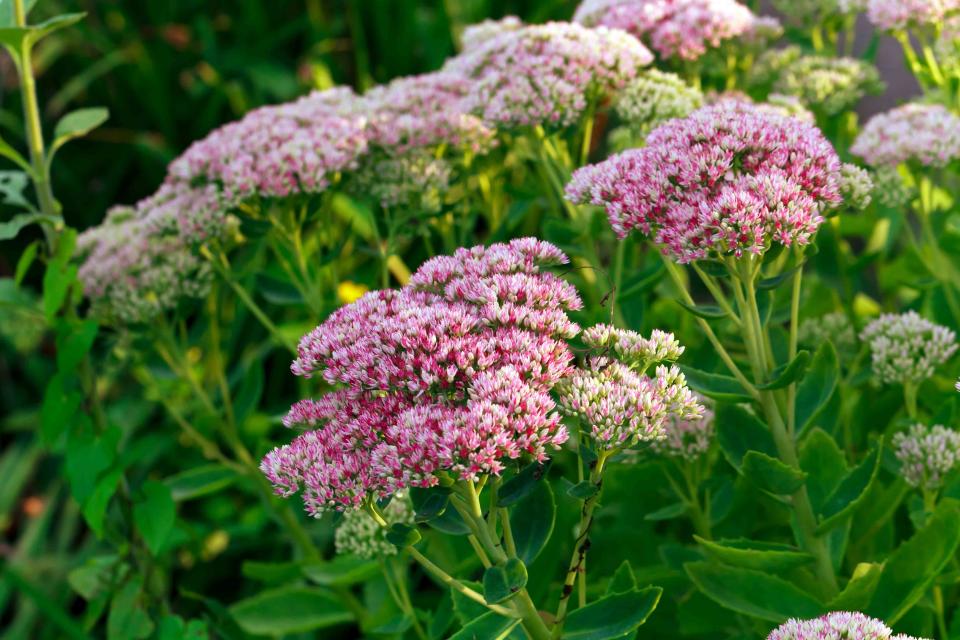
Monica Photo/GETTY IMAGES
If the end of summer gets you down, bring cheer to your fall with these outdoor plants that bloom in early autumn. These plants deliver colorful blooms during the summer-to-fall transition in September. The list is divided into four regions, featuring native plants in each area.
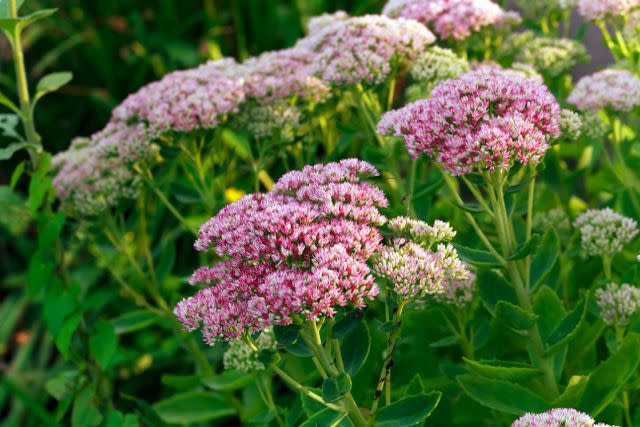
Each plant includes growing tips and the best time to plant. If you have a green thumb, you can plant seeds, but for beginners, opt for bulbs or seedlings to give you quicker, easier blooms. Seeds can be more difficult to grow and are more vulnerable to changes in soil conditions and weather.
Related: 16 Smart Gardening Hacks to Help You Grow Your Most Beautiful Garden Ever
The Northeast
If you live in the Northeast, these plants are native to the area and will deliver bursts of color in early autumn.
Wild Bergamot (Monarda fistulosa) or Bee Balms
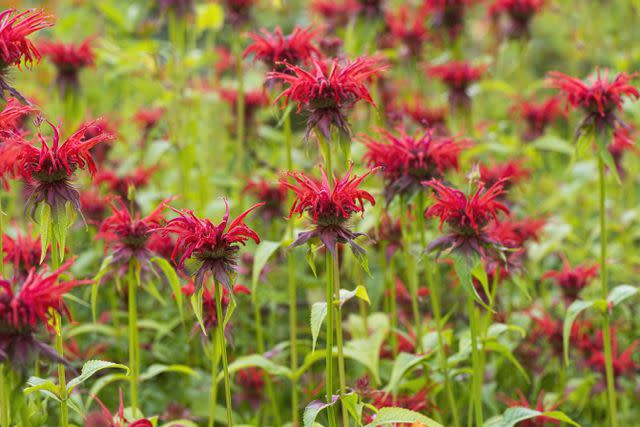
Jacky Parker Photography/GETTY IMAGES
“This clumping monarda produces really interesting, non-traditional flowers that bloom late summer until fall,” says Karen Musgrave, New York State Certified Nursery and Landscape Professional, the marketing and e-commerce associate for Hicks Nurseries. The purple flowers attract pollinators such as bees, hummingbirds, and butterflies, Musgrave says. Wild Bergamot grows best in sunny locations with more dry than wet soil. The perennial is deer and drought-resistant, grows 3 to 4 feet tall, and will come back year after year. Plant your Wild Bergamot seeds in spring or summer for a fall bloom.
New England Aster (Symphyotrichum novae-angliae)
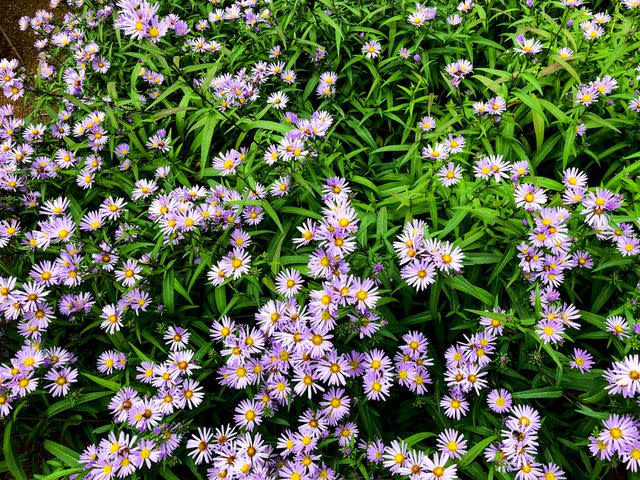
Feifei Cui-Paoluzzo
New England Aster offers vibrant splashes of color, with purple or pinkish daisy-like flowers that bloom in late summer and early autumn. These perennials attract butterflies and prefer full to partial sun. Plant them in early spring or late summer for a brilliant bloom in September and October.
Sweet Black-Eyed Susan (Rudbeckia tomentosa)
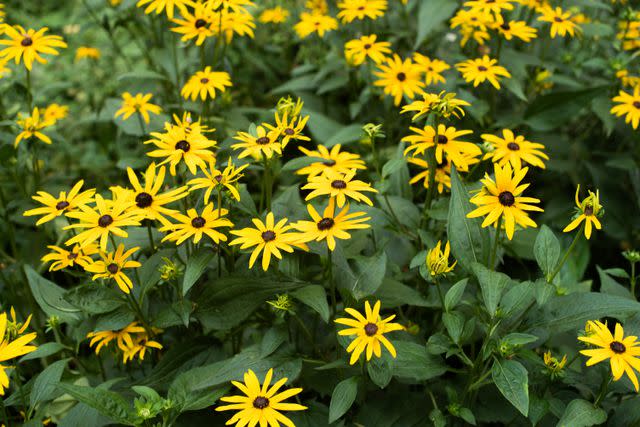
Elena Petrachkova/GETTY IMAGES
“This classic summer-blooming plant is great for beginners because it is so easy to care for,” Musgrave says. “It produces golden yellow flowers from summer through fall.” The Sweet Black-Eyed Susan grows 3 to 6 feet tall and requires well-drained soil and sun to light shade. Plant it in the spring, and it will rebloom in your garden for many summers and falls to come.
The Midwest
These are plants native to the Midwest that offer vivid blooms in early fall and can withstand cold winters.
Cardinal Flower (Lobelia cardinalis)
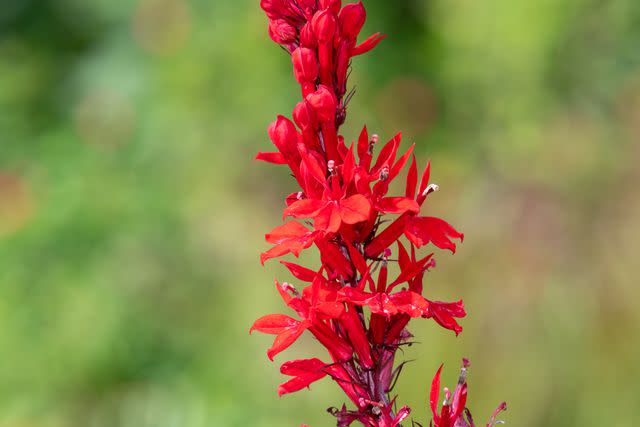
Tom Meaker/GETTY IMAGES
You can add a splash of red to your autumn with Cardinal Flower, says Anna Ohler, owner of Bright Lane Gardens Nursery in Michigan. These crimson perennial flowers bloom from late summer to early fall. They thrive on plenty of water and grow naturally along streambeds and riverbeds. In addition to the natural red variety, there are cultivars with white and rose-pink flowers. Plant cardinal flowers in spring or fall and keep them moist year-round.
Joe Pye Weed (Eutrochium purpureum)
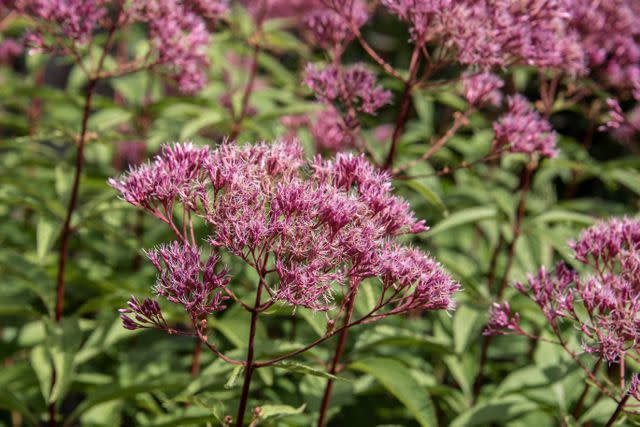
Andrey Nikitin/GETTY IMAGES
Joe Pye Weed is another native plant Ohler recommends. These hardy, elegant perennials have bright purple or pink flowers that bloom from late summer to early fall. Joe Pye Weed grows best in full sun or partial shade and is best to plant from potted nursery plants in the spring.
Tickseed (Coreopsis)
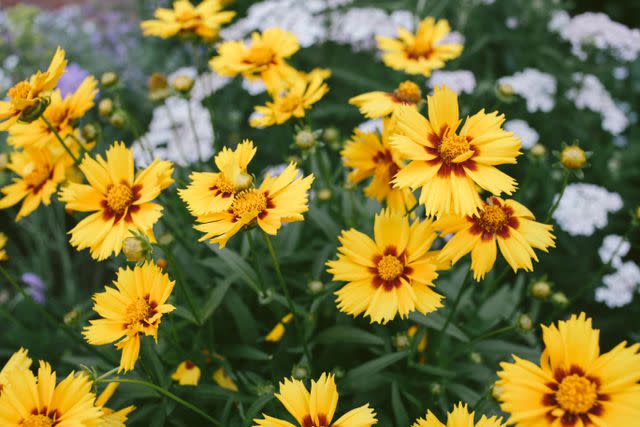
Grace Cary/GETTY IMAGES
Tickseed is much more beautiful than their name implies, Ohler says, with stunning yellow daisy-like flowers that bloom from summer through fall. These low-maintenance plants come in over 80 varieties with varying foliage. They thrive in full sun and bloom in a variety of soil conditions. Plant your Tickseeds in spring to early fall in well-drained soil.
The South
If you live in the South, these native flowering plants are perfect for fall blooms and can withstand the summer heat.
Goldenrod (Solidago)
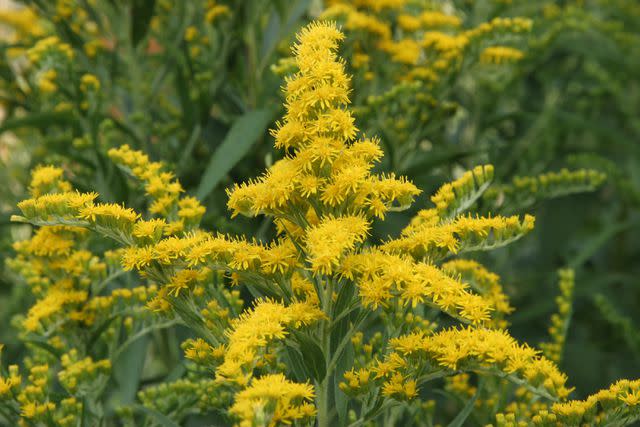
Solidago/GETTY IMAGES
“Goldenrods boast captivating bright yellow flowers that bloom from late summer to early fall,” says Diana Cox, an Alabama gardening consultant and owner of TheGardeningTalk.com. “Their resilience to drought and low-maintenance nature make them ideal choices for any garden.” These perennials attract butterflies and pollinators. Grow Goldenrods in areas with full sun and well-drained soil, Cox advises. Plant them in spring or early summer to bloom in late summer through October.
Black-Eyed Susan (Rudbeckia hirta)
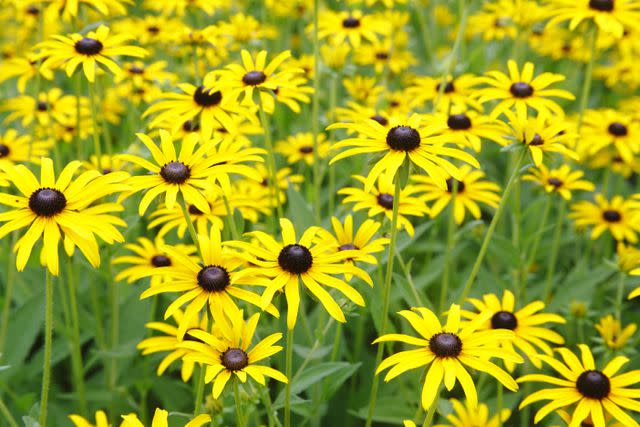
Steve Cicero/GETTY IMAGES
“A well-known native wildflower, the Black-eyed Susan features bright yellow petals with charming dark brown centers. These beauties are not only drought-tolerant and low-maintenance but also attract an array of butterflies and other pollinators,” Cox says. Plant Black-Eyed Susans in areas with full sun exposure and well-drained soil to experience their full splendor.
Coneflower (Echinacea)
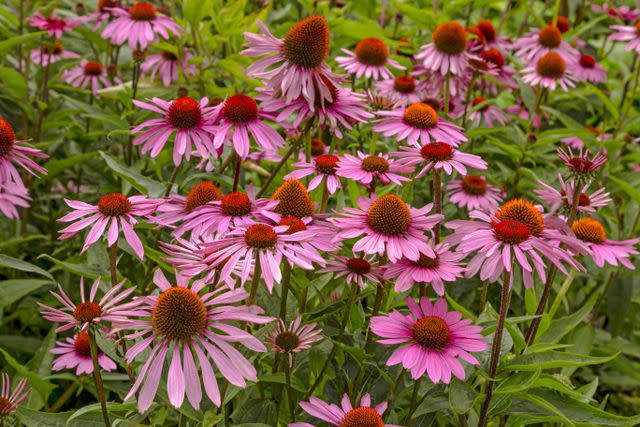
Mieneke Andeweg-van Rijn/GETTY IMAGES
This native wildflower boasts large, daisy-like flowers in captivating purple, pink, and yellow shades. “With its remarkable resilience to both drought and low-maintenance requirements, Coneflowers are perfect for gardens in hot, dry climates. Ensure planting in areas with full sun exposure and well-drained soil for optimal growth,” Cox says.
The West
These hardy native plants can withstand dry spells and deliver vivid blooms in autumn.
Autumn Joy (Herbstfreude)
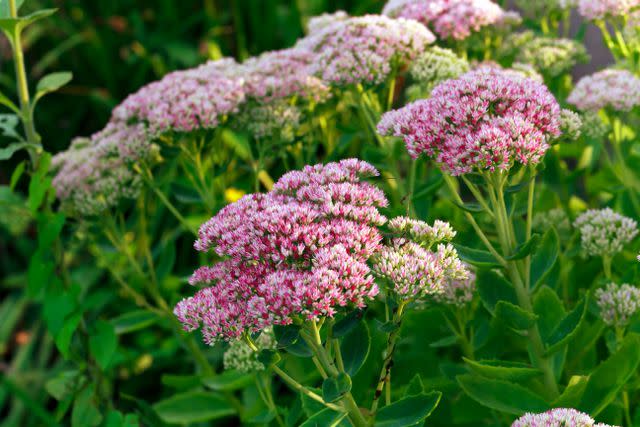
Monica Photo/GETTY IMAGES
Autumn Joy performs well on the West Coast, including California, Oregon, and Washington. With their mild coastal climates, many areas on the West Coast experience a long growing season, allowing Autumn Joy to continue blooming into the fall, says Brock Ingham, owner of Bigger Garden. Plant them in full sun areas in spring for an early autumn bloom.
Virginia Creeper (Parthenocissus quinquefolia)
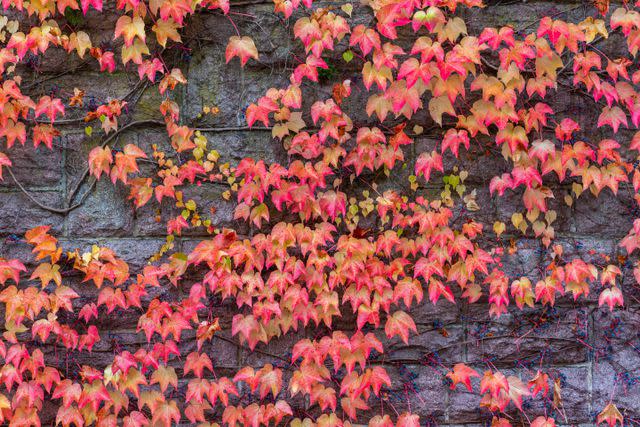
Yulia-Images/GETTY IMAGES
“Virginia Creeper is a vine plant that features beautiful red foliage in the fall. It’s low-maintenance and can tolerate a variety of soil conditions,” says Nevada gardener Steven Harriman of Hydroponics Harmony. Virginia Creeper should be planted in the spring or fall to bloom in early autumn.
Globemallow (Sphaeralcea)
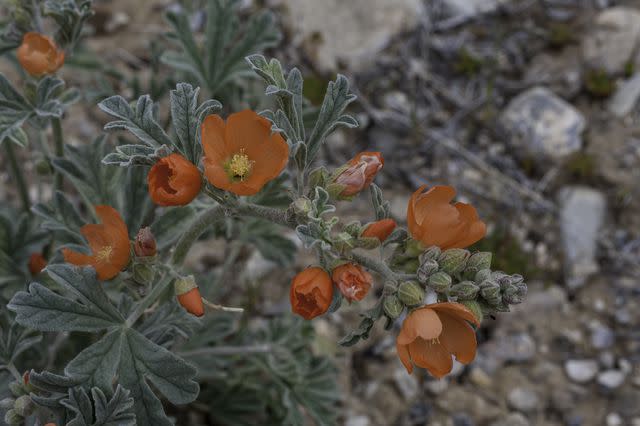
Gerald Corsi/GETTY IMAGES
Several species of Globemallow can thrive in Western climates, Harriman says. These plants have vibrant orange or red flowers and can tolerate dry conditions. They thrive in full sun and dry soil. They should be planted in the spring or fall to bloom in September and October.
Related: 15 Impossible-to-Kill Outdoor Plants
For more Real Simple news, make sure to sign up for our newsletter!
Read the original article on Real Simple.

